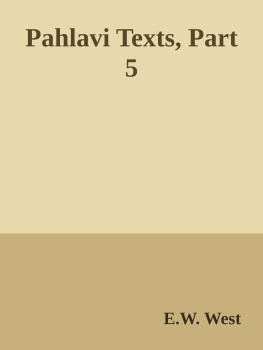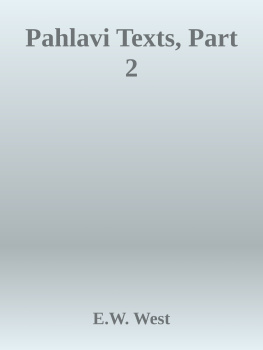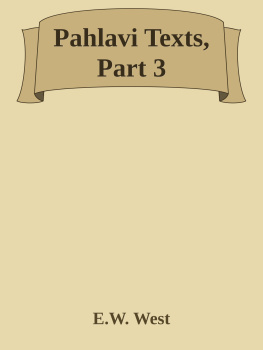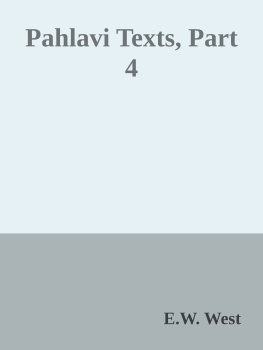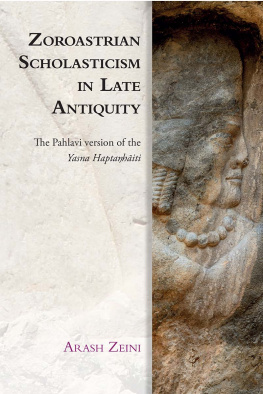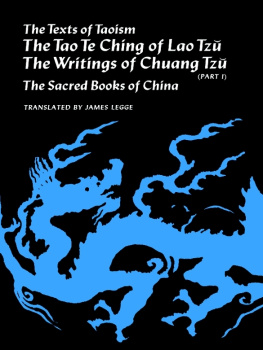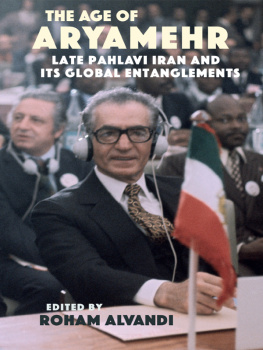E.W. West (tr.) - Pahlavi Texts, Part 5
Here you can read online E.W. West (tr.) - Pahlavi Texts, Part 5 full text of the book (entire story) in english for free. Download pdf and epub, get meaning, cover and reviews about this ebook. genre: Religion. Description of the work, (preface) as well as reviews are available. Best literature library LitArk.com created for fans of good reading and offers a wide selection of genres:
Romance novel
Science fiction
Adventure
Detective
Science
History
Home and family
Prose
Art
Politics
Computer
Non-fiction
Religion
Business
Children
Humor
Choose a favorite category and find really read worthwhile books. Enjoy immersion in the world of imagination, feel the emotions of the characters or learn something new for yourself, make an fascinating discovery.
- Book:Pahlavi Texts, Part 5
- Author:
- Genre:
- Rating:5 / 5
- Favourites:Add to favourites
- Your mark:
- 100
- 1
- 2
- 3
- 4
- 5
Pahlavi Texts, Part 5: summary, description and annotation
We offer to read an annotation, description, summary or preface (depends on what the author of the book "Pahlavi Texts, Part 5" wrote himself). If you haven't found the necessary information about the book — write in the comments, we will try to find it.
Pahlavi Texts, Part 5 — read online for free the complete book (whole text) full work
Below is the text of the book, divided by pages. System saving the place of the last page read, allows you to conveniently read the book "Pahlavi Texts, Part 5" online for free, without having to search again every time where you left off. Put a bookmark, and you can go to the page where you finished reading at any time.
Font size:
Interval:
Bookmark:

This is part V of the Sacred Books of the EastPahlavi Texts translation.It is the shortest one in the series, a slight233 pp., about half of most other SBE volumes.SBE 47 contains translations of a number of very lateZoroastrian texts, some prophetic in nature, othersproviding clues to the chronology of the religion.As such, the texts here, the Dinkard and Selections of Zad-Sparam,make interesting reading.They will be of use both to scholars looking for information aboutthe development of Zoroastrianism, and those looking fornon-traditional books of prophecy.West concludes that the traditional date of the birthof Zoroaster corresponds to 660 BCE; more recently, 628 BCE hasbeen proposed, so the former date probably isn't so far off.He also computes the:don't get too excited, though, the end of the world isn't until 2398, sowe still have about four centuries left.
PRODUCTION NOTES: This volume proved a tough job. As the title page notes,I worked on it between 2002 and 2007, when my STML technology was matureenough to allow me to finish it in a reasonable timeframe.
--J.B. Hare, August 13, 2007.
Title PageContentsIntroduction
Notice of Attribution.
Scanned at sacred-texts.com, June 2002. Proofed and formatted by John Bruno Hare, August 2005, March 2007, completed August 2007. This text is in the public domain in the United States because it was published prior to 1923. These files may be used for any non-commercial purpose, provided this notice of attribution is left intact in all copies.
PAGE | |
INTRODUCTION | |
Abbreviations used in this volume | |
MARVELS OF ZOROASTRIANISM. | |
DINKA.RD, BOOK VII. | |
Chap. | |
Descent of the glorious destiny | |
Parentage of Zaratust | |
His birth, childhood, and youth till his conference | |
His missions to the Karaps, and Vistasp's conversion | |
Events in the last thirty-five years of his life | |
Further events till the death of Vistasp | |
" " till end of Sasanian monarchy | |
" " till end of Zaratust's millennium | |
Aushedar's millennium | |
Aushedar-mah's millennium | |
Soshans and the renovation | |
DINKARD, BOOK V. | |
Kai-Loharasp at Jerusalem, and descent of the religion. | |
Parentage, birth, and life of Zaratust. Future apostles | |
Events after Vistasp's conversion and in later times | |
Descent of the Iranians. The tribe having a Gyemara | |
SELECTIONS OF ZAD-SPARAM. | |
Two old legends of Spendarmad and of the hero Srito | |
Parentage of Zaratust | |
Demons try to injure him before and at his birth | |
Five Karap brothers opposed to Zaratust and his four brothers | |
One Karap tries to kill Zaratust five times | |
CHAP. | PAGE |
Another foretells his glorious destiny | |
His father disagrees with him | |
And he disagrees with his father and the chief Karap | |
Legends indicative of his good disposition | |
His going to confer with Auharmazd | |
His conferences with the archangels | |
Dates of conversions, births, and deaths | |
Five dispositions of priests and ten admonitions | |
INDEX | |
ERRATUM | |
Transliteration of Oriental Alphabets adopted for the Translations of the Sacred Books of the East |
1. IN the summary account of the Spend Nask, given in the eighth book of the Dinkard, chapter XIV, it is stated in 4 (see S.B.E., vol. xxxvii, p. 32) that many marvels, owing to Zaratust, are published therein, 'just as there are some which, collected and selected, are noticed by the Dinkard manuscript.' This statement evidently refers to the seventh book of the Dinkard, which contains the legendary history of Zaratust and his religion, related as a series of marvels extending from the creation to the resurrection of mankind. A much briefer account of some of the same details occurs at the beginning of the fifth book of the Dinkard, and appears to have been abridged from a compilation which was either derived partially from a foreign source, or prepared for the use of foreign proselytes. A third compilation of similar legends is found among the Selections of Zad-sparam. And a careful translation of these three Pahlavi Texts constitutes the Marvels of Zoroastrianism contained in this volume.
2. As the extent of Dk. VII is about 16,000 Pahlavi words (without allowing for one folio lost), it probably contains about four-fifths of the details included in the Spend Nask, the Pahlavi version, of which has been estimated, in S.B.E., vol. xxxvii, p. 469, to extend to 20,500 words. It says very little about Zaratust's conferences with the sacred beings (mentioned in Dk. VIII, xiv, 5, 6), and gives no description of the other world and the way thither (as reported ibid. 8). But it probably contains many verbatim extracts from other parts of the Pahlavi version of the Spend Nask, which appear, however, to have been previously collected in the Exposition of the Good Religion, an older MS. than the Dinkard, which is quoted as an authority in Dk. VII, i, 2.
3. This seventh book commences with a detailed statement of the descent of the glorious ruling dynasty from the primeval man Gayomard, through his descendants, the Pesdadian and Kayanian rulers, to Kai-Vistasp. Among the individuals, rarely mentioned elsewhere, are the sacred being Hadish (the protector of homesteads in the Visperad), Vaegered the brother of king Hoshang, Patakhsrobo king of the Arabs, and Aoshnar the chancellor of Kai-Us. Zaratust and the three millennial apostles are also mentioned, but the contents of this first chapter are probably derived from the Kitradad Nask (see Dk. VII, xiii, 20) and from Yt. XIX, 25-93.
Font size:
Interval:
Bookmark:
Similar books «Pahlavi Texts, Part 5»
Look at similar books to Pahlavi Texts, Part 5. We have selected literature similar in name and meaning in the hope of providing readers with more options to find new, interesting, not yet read works.
Discussion, reviews of the book Pahlavi Texts, Part 5 and just readers' own opinions. Leave your comments, write what you think about the work, its meaning or the main characters. Specify what exactly you liked and what you didn't like, and why you think so.

